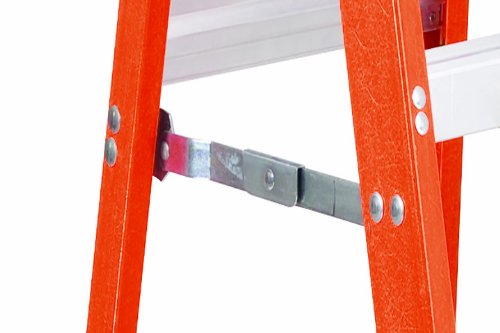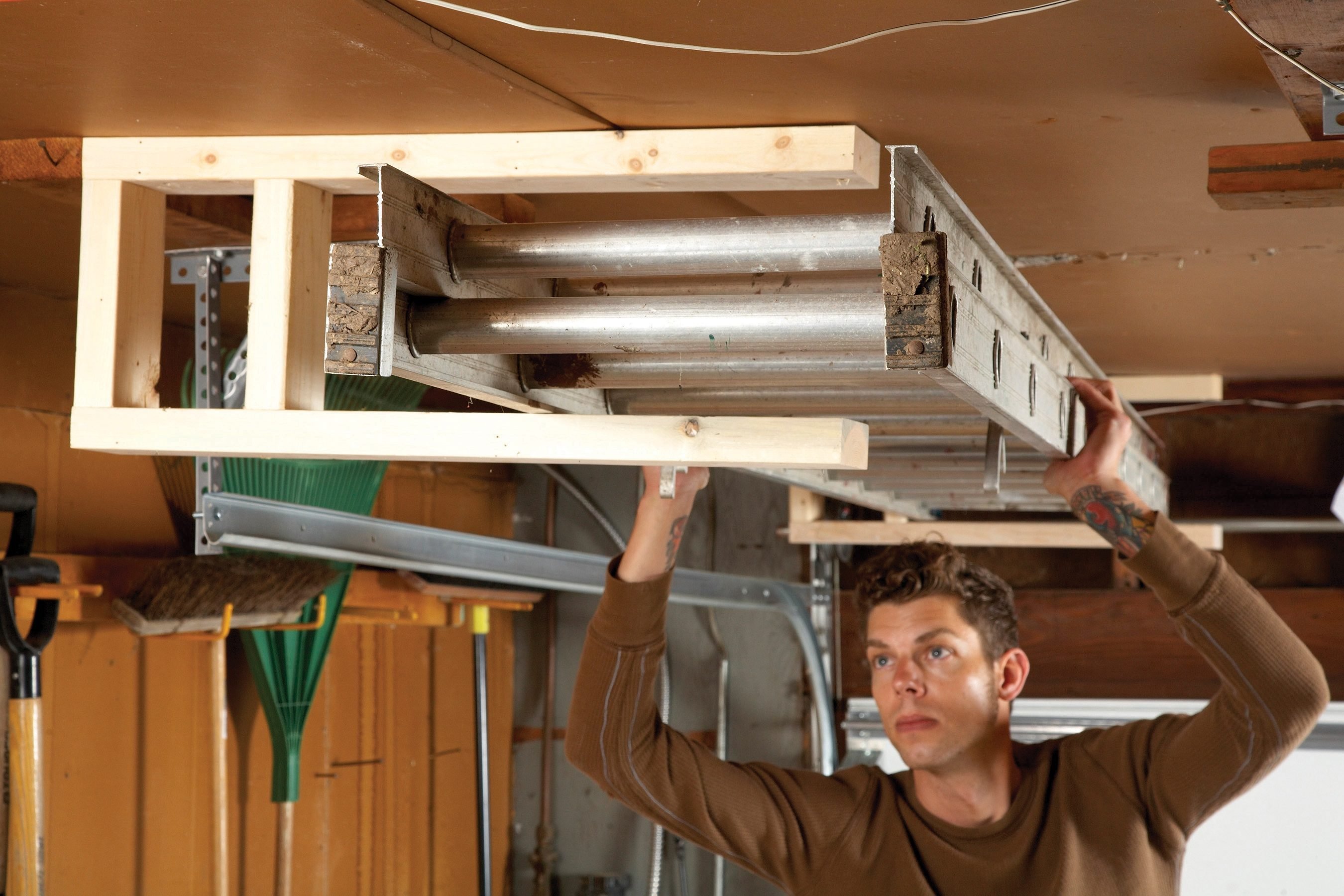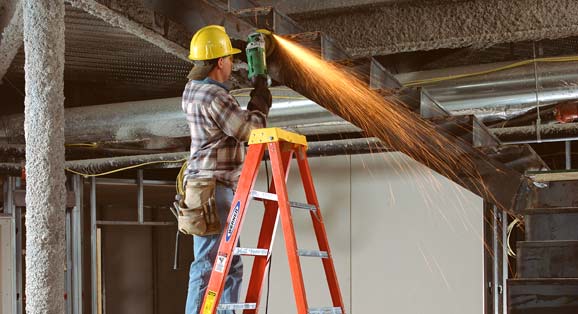In 2018, the Ministry of Manpower (MOM) cited that half of all construction fatalities can be attributed to falling while doing construction work at height. Working at height is dangerous: a minor fall from an industrial ladder or the top of a vehicle may cause serious injuries and could even be fatal. When working at height is concerned, there should be no room for complacency or negligence; appropriate equipment such as step ladders or A-frame ladders should always be used wherever possible.
Ladders come in all forms and there are many types of ladders for different purposes. Special ladders such as industrial extension ladders or telescopic ladders are essential workplace equipment in factories and large warehouses. They allow users to reach extremely hight spaces on racks to store and retrieve items with ease.
Common workplace accidents due to misuse of ladders
Although ladders may look intuitive and almost foolproof to use, many workplace accidents involving ladders happen due to improper usage. Many workplace accidents take place due to misuse of ladders. This means that many of us actually do not know how to use a ladder properly or do not follow safety guidelines when using them. Here are some common reasons why accidents involving ladders happen:
Working at the wrong height
An extremely common mistake when working at height is to use a ladder that is too short. When using a short ladder, people tend to extend their body as much as possible to try and compensate for the difference in height. If he or she extends or leans their body too much, there is a very high risk of falling over and getting injured.
People tend to step on the highest rung of the ladder when using a ladder that is too short and when this happens, there is nothing to hold onto to keep his/her balance and as such is exposed to a very high risk of falling. If you are able to reach a certain area when using your ladder, you should either change the position of the ladder or get another ladder of a more suitable height.
Avoid placing ladders on unstable surfaces

Always position ladders on flat or firm surfaces. If you place a it on uneven ground, you risk falling over as it may be unstable can easily collapse causing you to injure yourselves. A very simple method to prevent this issue is to always ensure that it is not wobbly and is planted firmly on the ground before you start climbing it.
Failure to secure rubber feet/lock spreaders of ladder
If you use a ladder without checking whether the lock spreaders or other locking mechanism are securely engaged, it may collapse as you climb up. Many ladders come with rubber feet that have slip-resistant properties and help keep the ladder stable on various surfaces. Not having the rubber feet attached to the bottom of the ladder may cause it to slip and collapse.
Besides the rubber feet, it is also important to ensure that the rungs you are stepping and climbing on are slip-resistant. The rungs have very little surface area and a misstep or getting your footing wrong can cause you to slip and fall. Apply slip-resistant treads, like the one below, to your ladders as an extra precautionary measure.
Check your ladder before use
Check the stiles
It is important to check the condition of the stiles to ensure that they are not damaged or bent to prevent the ladder from collapsing. The stiles should be stable and should be able to hold its weight as well as the user’s.
Check the feet of ladder

If the ladder feet is damaged, worn, or missing, the it will be prone to slipping. When you move the it from dirty surfaces, it is important to clean and remove the dirt from the feet. Also, make sure that they have anti-skid grips for better stability on smooth surfaces.
Check the rungs
The rungs should not be loose, missing, worn, or bent as it makes the ladder vulnerable to breaking. As mentioned above, ensure that there is adequate slip protection as it provides an additional layer of safety. It is slip resistant so it ensures that the user does not fall off easily.
Check locking mechanisms
The locking mechanisms should be in good working condition. You should be able to engage the locking bars at all times. Ensure that they are working well and are not worn or damaged.
Check for damages, cracks, defects
Carefully inspect the ladder for defects, cracks, and damages they may indicate that the it is unsafe for use. It is important not to ignore them and to get it fixed or replaced as soon as possible.
Handrails
The handrails should be sturdy and attached safely. They must be able to provide an adequate handhold for users to grasp on to for stability as well as to prevent falls.
Set-up for ladders
The set up is paramount in the proper handling of ladders.
Ensure that there is enough space to fully open the ladders
It is vital that you have adequate space to open the ladders completely. If not opened up fully, the base of the ladder becomes unstable and shaky. Ensure that there are no obstructions near the it as may contribute to the instability. Also, prevent it in places with high human traffic if possible because it increases the chances of accidents and injuries taking place.
Use locking devices

All the locking devices such as the mechanism for the spreaders and bar should be in place. These mechanisms will keep the ladder stable as you use it.
Ground should be firm, hard and level
The ground where you keep the ladder should be firm, hard, and level as it is the best surface to keep the it stable at all times.

Get an adjustable ladder if you are required to work on uneven surfaces. The Pica Adjustable Work Platform DWX-6908C comes with adjustable and expandable legs. This helps to level it on uneven ground safely. The platform top allows you to work at height in a stable and secure manner while providing comfort due to its large surface area.
Ladder-in-use
Here are a few factors to keep in mind when using ladders:
Angle
Placing the ladder at the right angle is crucial as it makes it safe and secure for proper use. Follow this simple four-to one-rule to get the correct angle. For every four feet of height that you have to climb, the base of the ladder should be placed one feet away from the wall that it would be leaning on.
In addition to this, it is important to keep the ladder close to the area of work. This prevents the user from overreaching or leaning their body much which can cause discomfort to the user and instability. When needed, move the ladder instead to a more comfortable position.
Three-point contact ladder

At all times, there should be three points of contact between your body and the ladder. In other words, either one foot and both hands or one hand and both feet have to be placed on it when using it. Also, use both hands when climbing to ensure that you maintain a firm grip on the ladder at all times.
Always face forward
Avoid turning around or looking sideways as it is easy to lose balance and fall. The best way is to face toward the ladder and keep your body centered between side rails especially when climbing up or down.
Hands-free
Your hands should be free and should not be holding on to any items so that you can hold the ladder firmly while climbing. If you have to carry heavy items, use a rope bucket to lift them up.
Do not work off top three rungs

The top two rungs of the ladder exist only to provide stability. Working on them isn’t a good idea as you shouldn’t be standing on them. Starting from the top, the third rung is the last one you can climb.
After-use of ladders
Follow these instructions to get the most out of your ladder:
Do not leave ladders unattended
Avoid leaving ladders unattended as it is considered as a safety hazard. Prevent unsupervised or unauthorised usage by storing them away in safe place.
Store away in a safe place

Always store the ladders away in a safe place, out of sight to prevent workers from tripping by accident. This also prevents it from falling over, which could potential hurt someone.
Ensure that it is clean and dry
Make sure that the ladder is clean and dry after using it to prevent it from getting damaged. This includes keeping them free from grease, oil, paint and other slippery material.
Keep them as compact as possible

As ladders are huge and bulky, they occupy a lot of storage space. It is a good practice to keep them as compact as possible by leaning them against the wall horizontally or by its side.
Check out the Louison Aluminium Telescopic Straight Ladder LTS09 which can be made small and compact to be stored away later. It is an extendable and retractable ladder which is great for use in small spaces. It can also be easily carried and stored away.
Using Ladders Safely at the Workplace
Ladders are one of the most frequently used equipment in the workplace – be it in the office, warehouse or at a production plant. Accidents and injuries derived from wrong or unsafe usage of ladders are often preventable. Therefore, it is important to ensure that safety precautions and practices are exercised by everyone in the office.
For other safety guides and practices, check out this 13-step guideline to ensure worksite safety.

Stay connected